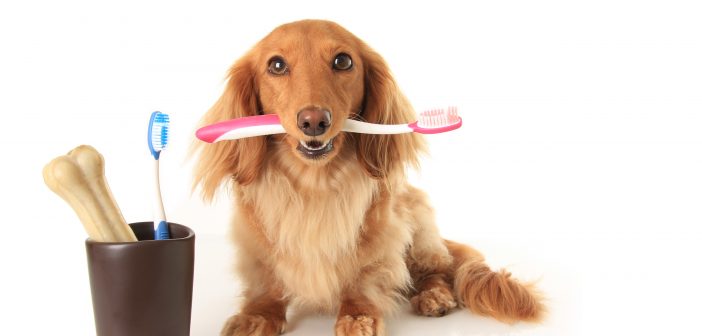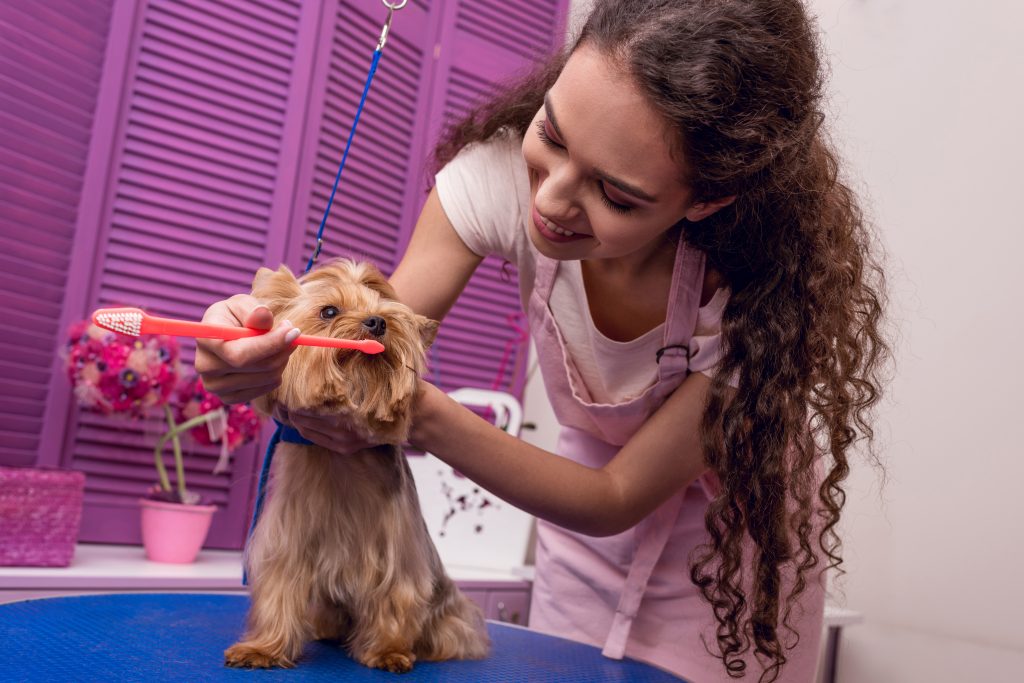By: Dr. Kathy Jermaine
University Veterinary Hospital
Home Dental Care: Who, What, When, Why?
When it comes to dental care, most people understand the value of brushing their teeth. Although many of us are aware that routine home dental care can also be beneficial to our pets, it is not a common undertaking for most. Furthermore, there are many misconceptions about the benefits and risks of home dental care. However, when utilized properly, it can be a great tool (in addition to routine anesthetic dental cleanings) to optimize your pet’s oral health.
Who should receive home dental care?
Believe it or not, not every pet should receive home dental care. It is ideally implemented in pets with little to no pre-existing dental disease since the focus is on prevention and maintenance. In other words, it will not reverse the disease that is already present. Therefore, young animals (after their adult teeth erupt), or pets that have recently had an anesthetic dental cleaning are ideal candidates. In fact, teeth brushing, or chewing can be quite painful in pets that have a pre-existing disease, especially those with tooth fractures, gingivitis, resorptive lesions, etc.
What is the goal of home dental care?
The goal of home dental care is to reduce and stop the build-up of plaque. Plaque is an invisible film that consists partially of bacteria that will eventually mineralize into calculus. Once calculus is present, it is much harder to remove and often requires professional dental cleaning to do so. Plaque can start to form on the surface of the tooth within hours of cleaning, and only takes a few days to harden into calculus. Therefore, daily or every other daily dental care is going to provide the biggest benefit to your pet.
How do I brush my pet’s teeth?
Unfortunately, not every pet is amendable to having their teeth brushed. It helps to start by handling their mouth as much as possible, and the younger, the better. Once the pet is accustomed to fingers in their mouth, a washcloth can be rubbed on the teeth. It can be helpful to add something flavorful to the cloth for a more positive experience. The final step is to introduce a soft-bristled toothbrush. The brush should be held at a 45-degree angle and brushed back and forth or from the gum to the edge of the tooth. Getting the inside (tongue-side) of the teeth is not as important as the outside. Although the mechanical action from the toothbrush is most important, there may be some benefit from using veterinary specific toothpaste. Avoid human toothpaste as that may the animal sick when swallowed.
The benefit of dental treats?
Chewing can also provide a benefit by mechanically reducing plaque. However, this must always be done with caution. Many products can cause more harm than good because they are too hard and break teeth. Such products include bones, ANTLERS, nylon or hard plastic bones, hooves, etc. Even tennis balls can be very abrasive and cause significant wear to teeth. More teeth-appropriate products may include rawhide strips or softer rubber products such as a Kong toy. Any product should always be used under supervision.
A great resource is www.vohc.org/ which lists dental products approved by the veterinary oral health council.
Home dental care is not a substitute for professional anesthetic dental cleanings, but when used properly, can be a great tool to manage and prevent the progression of periodontal disease, and the well-being of your pet.




